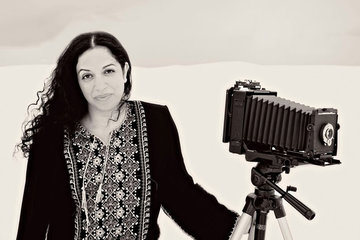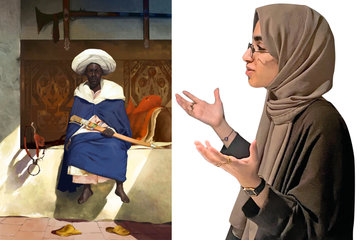
“I used to draw faces, figures and portraits, but I wasn’t satisfied,” she says. “When I researched Islamic art and geometry, as well as Western artists like Kandinsky, Paul Klee, and Mondrian, I saw how these artists became too spiritual and deep. It’s about abstraction and I think language is abstract as it is. And, I wanted to abstract it more.”
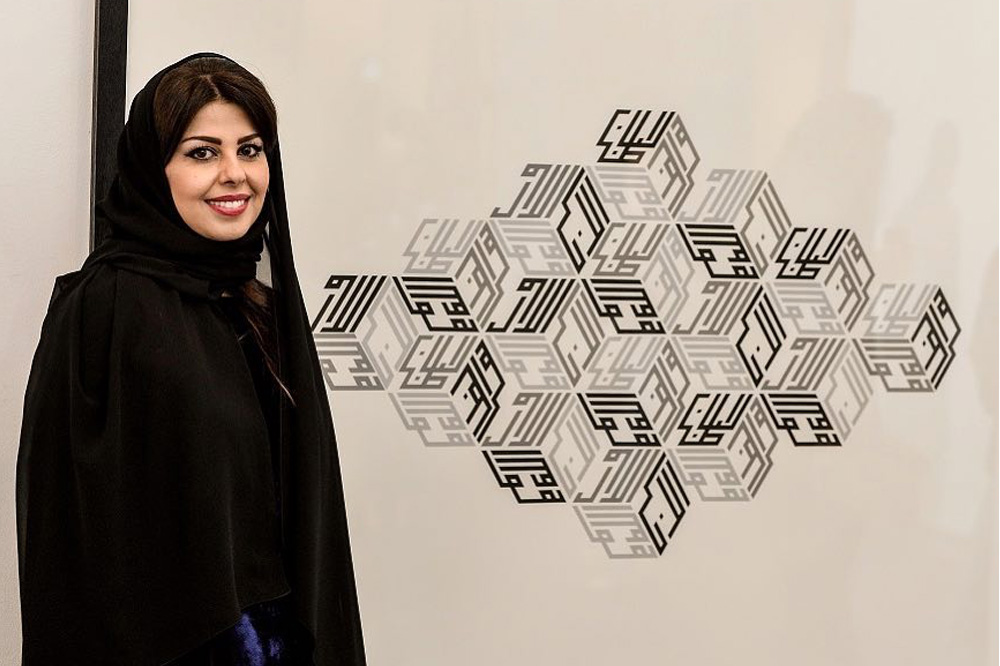
Lulwah Al Homoud
In Lulwah Al Homoud’s most recent exhibition at Tabari’s Artspace, titled, “Beyond the Grid”, she showcases a number of large-scale minimalist art pieces that portray geometric forms of optical art. Her inspiration is derived from written language and Arabic calligraphy, which through her body of work, break the rules of traditional geometric patterns, creating new design codes and patterns.
Al Homoud was born in 1967 in Riyadh, Saudi Arabia and studies sociology at the King Saud University, going on to receive an MA from Central Saint Martin’s in London – an establishment renowned to produces designers and artists including, Alexander McQueen. After obtaining her Master’s degree in London, Lulwah mastered the art of Arabic calligraphy, training under a well-known Pakistani calligrapher, Rasheed Butt and was fascinated by Egyptian, Ahmed Moustafa’s calligraphic style.
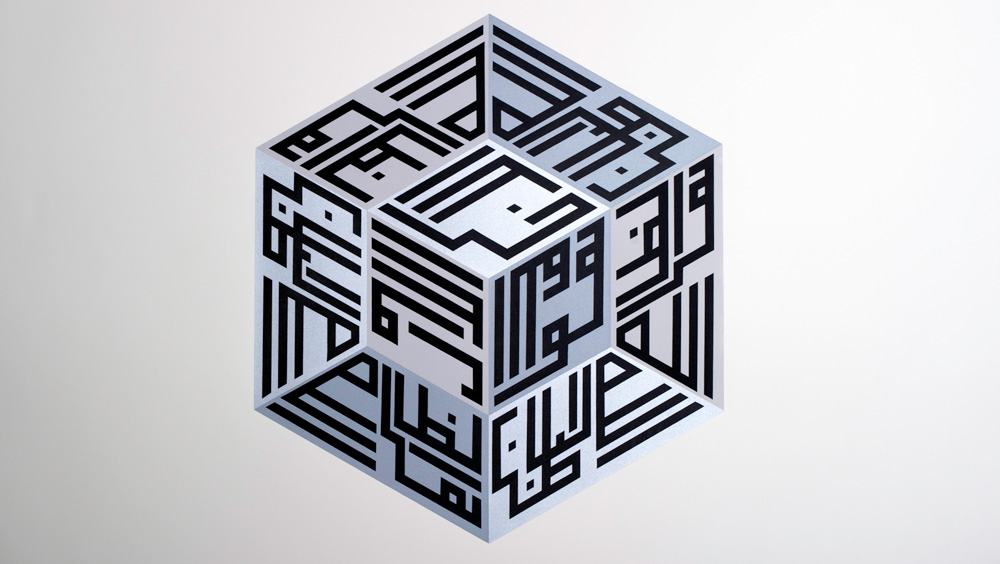
Though the Saudi artist now lives between London and Dubai, she has presented her bodies of work across the Middle East and internationally, including at the Sharjah Calligraphy Museum, UAE (2015); Hafez Gallery, Jeddah, Saudi Arabia (2016); Sundaram Tagore Galleries in New York and Hong Kong (2011, 2012); AB Gallery in Lucerne, Switzerland (2014); as well as in France, Germany, Lebanon and Korea.
“Your art reflects you. If you are spiritual then you will create a spiritual art,” says Lulwah Al Homoud.
Being influenced by her mentor and muse, Butt and Moustafa, she became inspired to incorporate visual interpretations of Islamic calligraphy into her own art. Her aim is to create a spiritual feel to her work. Each piece of work is mystical and mesmerizes the viewer with its precise and orderly geometric lines, and repetitive patterns.

As a Dubai based, Saudi artist, Lulwah merges geometric concepts with traditional Islamic influences, her art, she captivates and dazzles her audience. “I research the hidden rules of creation—not the outer appearance of things, but how they are created mathematically, from a seed to a tree or a seed to a flower,” says the artist. “I think there is a different language that God tries to connect with us.”
Al Hamoud’s art is a language that looks into the inner creation of the world around us. “It’s a kind of meditation. Islam itself offers us a universal message. It did not come just to Arabs or a certain race—it is for everyone. It is about spirituality and connecting to one God. I see Islam as a way of life and my art is about my faith,” she tells Harper’s Bazaar Arabia.
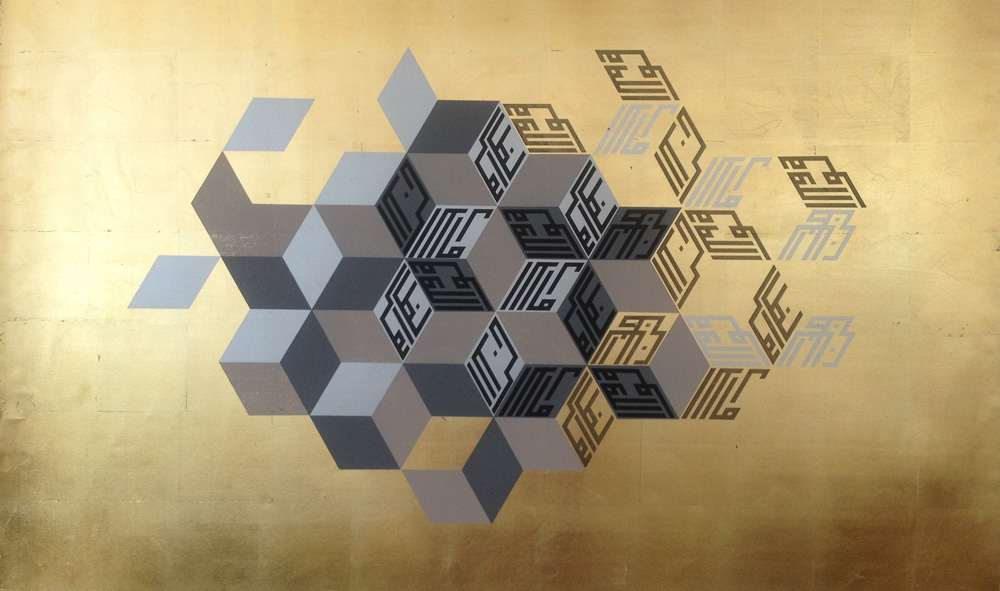
To create such intricate patterns, much of Lulwah’s work is research; she looks at philosophy, mathematics and art history, “I was attracted to Mondrian’s lines—he liberated nature from its outer appearance and found something deeper.” The Saudi artist herself, uses Ancient mathematics derived from the Vedas of North India. The Vedic Square, a multiplication system based on a 9x9 grid, has heavily influenced her own 9x9 works. Instead of using the numbers, she uses the first nine stages of the creation of humans as the starting point to create a repetitive pattern whilst moving “from multiplicity to unity by using the laws of proportion practiced in traditional Arabic calligraphy.”
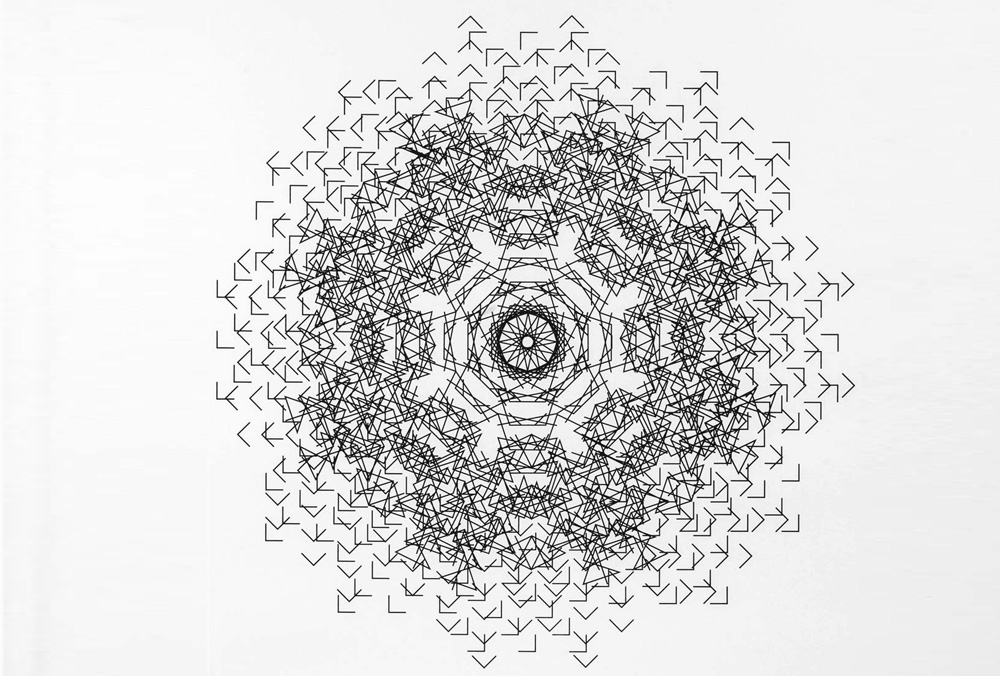
Not only does her work touch on Islam’s artistic side, but employs all aspects of her design process to compose the 99 names of God, entitling her lifelong project, “The Language of Existence.”


